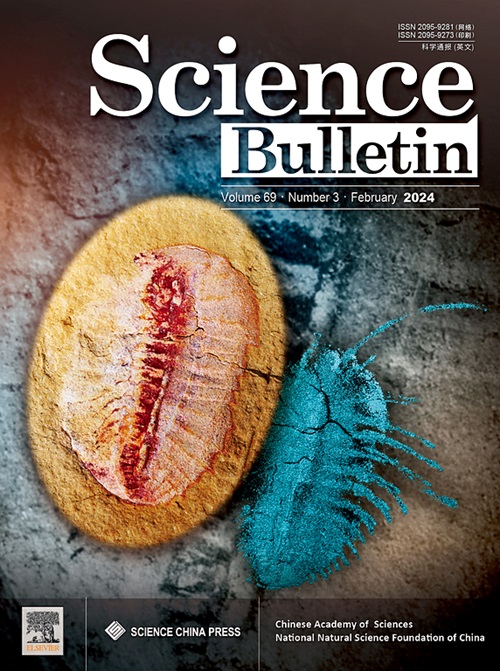An electrically activable nanochip to intensify gas-ionic-immunotherapy
IF 18.8
1区 综合性期刊
Q1 MULTIDISCIPLINARY SCIENCES
引用次数: 0
Abstract
Excess intracellular H2S induces destructive mitochondrial toxicity, while overload of Zn2+ results in cell pyroptosis and potentiates the tumor immunogenicity for immunotherapy. However, the precise delivery of both therapeutics remains a great challenge. Herein, an electrically activable ZnS nanochip for the controlled release of H2S and Zn2+ was developed for enhanced gas-ionic-immunotherapy (GIIT). Under an electric field, a locality with particularly high concentrations of H2S and Zn2+ was established by the voltage-controlled degradation of the ZnS nanoparticles (NPs). Consequently, the ZnS nanochip-mediated gas-ionic therapy (GIT) resulted in mitochondrial membrane potential depolarization, energy generation inhibition, and oxidative stress imbalance in tumor cells. Interestingly, the cyclic guanosine monophosphate-adenosine monophosphate synthase-stimulator of interferon genes (cGAS-STING) signaling pathway was activated due to the mitochondrial destruction. Moreover, the released Zn2+ resulted in the increase of the intracellular Zn levels and cell pyroptosis, which enhanced the immunogenicity via the release of damage-associated molecular patterns (DAMPs). In vitro and in vivo studies revealed that the ZnS nanochip-based GIT effectively eliminated the tumors under an electric field and mobilized the cytotoxic T lymphocytes for immunotherapy. The combination with αCTLA-4 further promoted the adaptive immune response and inhibited tumor metastasis and long-term tumor recurrence. This work presented an electrically activable ZnS nanochip for combined immunotherapy, which might inspire the development of electric stimulation therapy.

一种可电激活的纳米芯片,以加强气体离子免疫治疗。
过量的细胞内H2S诱导破坏性的线粒体毒性,而过量的Zn2+导致细胞焦亡并增强肿瘤免疫治疗的免疫原性。然而,这两种疗法的精确递送仍然是一个巨大的挑战。本研究开发了一种可电激活的ZnS纳米芯片,用于控制H2S和Zn2+的释放,用于增强气体离子免疫治疗(GIIT)。在电场作用下,通过电压控制ZnS纳米颗粒(NPs)的降解,形成了H2S和Zn2+浓度特别高的区域。因此,ZnS纳米芯片介导的气体离子治疗(GIT)导致肿瘤细胞线粒体膜电位去极化、能量产生抑制和氧化应激失衡。有趣的是,环鸟苷单磷酸腺苷单磷酸合成酶干扰素基因刺激因子(cGAS-STING)信号通路由于线粒体破坏而被激活。此外,释放的Zn2+导致细胞内Zn水平升高和细胞凋亡,从而通过释放损伤相关分子模式(DAMPs)增强免疫原性。体外和体内研究表明,基于ZnS纳米芯片的GIT在电场作用下能有效消除肿瘤,调动细胞毒性T淋巴细胞进行免疫治疗。联合αCTLA-4进一步促进适应性免疫反应,抑制肿瘤转移和长期肿瘤复发。本工作提出了一种用于联合免疫治疗的电激活ZnS纳米芯片,这可能会激发电刺激治疗的发展。
本文章由计算机程序翻译,如有差异,请以英文原文为准。
求助全文
约1分钟内获得全文
求助全文
来源期刊

Science Bulletin
MULTIDISCIPLINARY SCIENCES-
CiteScore
24.60
自引率
2.10%
发文量
8092
期刊介绍:
Science Bulletin (Sci. Bull., formerly known as Chinese Science Bulletin) is a multidisciplinary academic journal supervised by the Chinese Academy of Sciences (CAS) and co-sponsored by the CAS and the National Natural Science Foundation of China (NSFC). Sci. Bull. is a semi-monthly international journal publishing high-caliber peer-reviewed research on a broad range of natural sciences and high-tech fields on the basis of its originality, scientific significance and whether it is of general interest. In addition, we are committed to serving the scientific community with immediate, authoritative news and valuable insights into upcoming trends around the globe.
文献相关原料
公司名称
产品信息
阿拉丁
Thiourea
阿拉丁
zinc acetate
阿拉丁
anhydrous ferric trichloride
阿拉丁
sodium sulfate (Na2SO4)
阿拉丁
sodium hydrosulfide (NaHS)
 求助内容:
求助内容: 应助结果提醒方式:
应助结果提醒方式:


